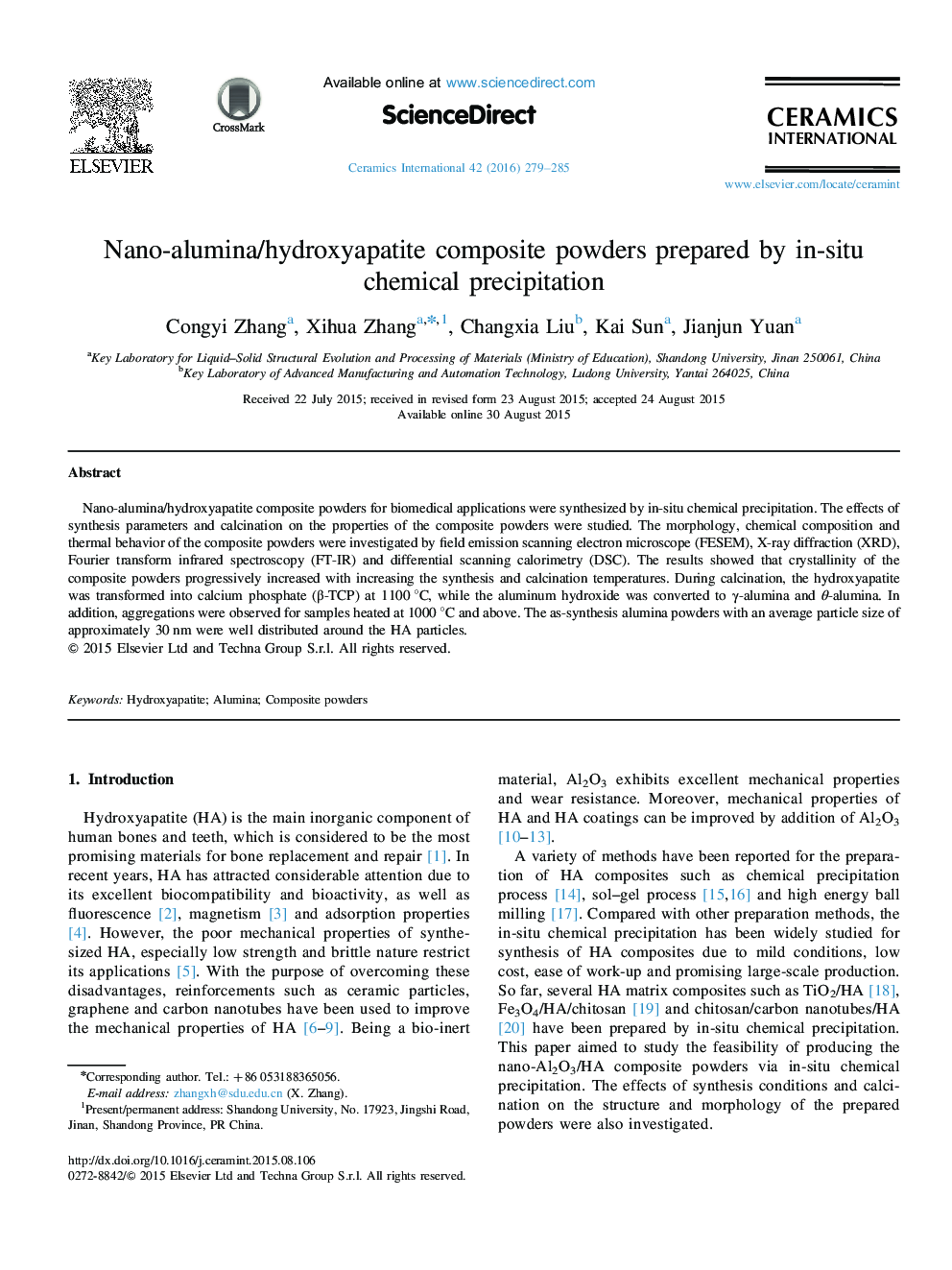| Article ID | Journal | Published Year | Pages | File Type |
|---|---|---|---|---|
| 1459430 | Ceramics International | 2016 | 7 Pages |
Nano-alumina/hydroxyapatite composite powders for biomedical applications were synthesized by in-situ chemical precipitation. The effects of synthesis parameters and calcination on the properties of the composite powders were studied. The morphology, chemical composition and thermal behavior of the composite powders were investigated by field emission scanning electron microscope (FESEM), X-ray diffraction (XRD), Fourier transform infrared spectroscopy (FT-IR) and differential scanning calorimetry (DSC). The results showed that crystallinity of the composite powders progressively increased with increasing the synthesis and calcination temperatures. During calcination, the hydroxyapatite was transformed into calcium phosphate (β-TCP) at 1100 °C, while the aluminum hydroxide was converted to γ-alumina and θ-alumina. In addition, aggregations were observed for samples heated at 1000 °C and above. The as-synthesis alumina powders with an average particle size of approximately 30 nm were well distributed around the HA particles.
